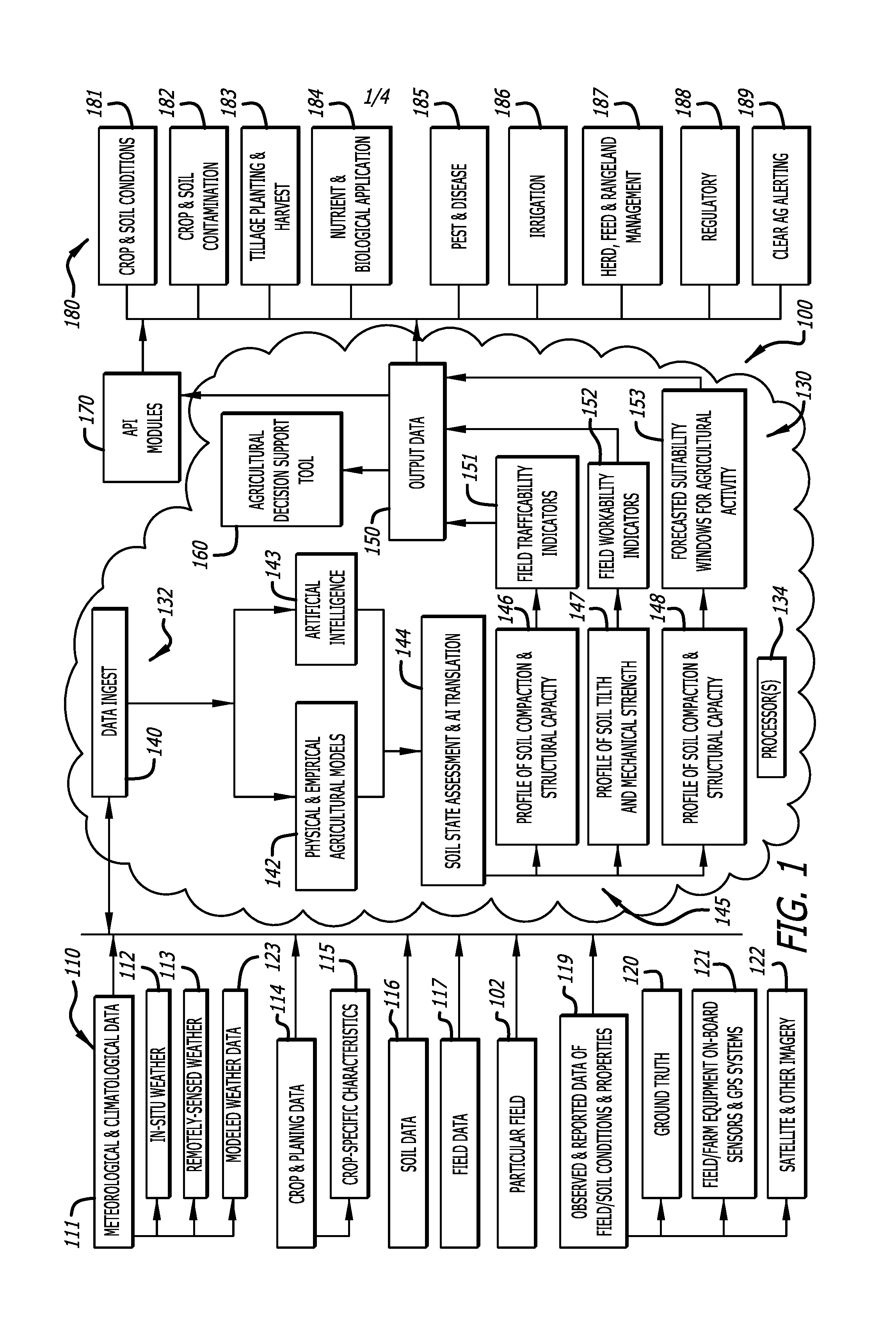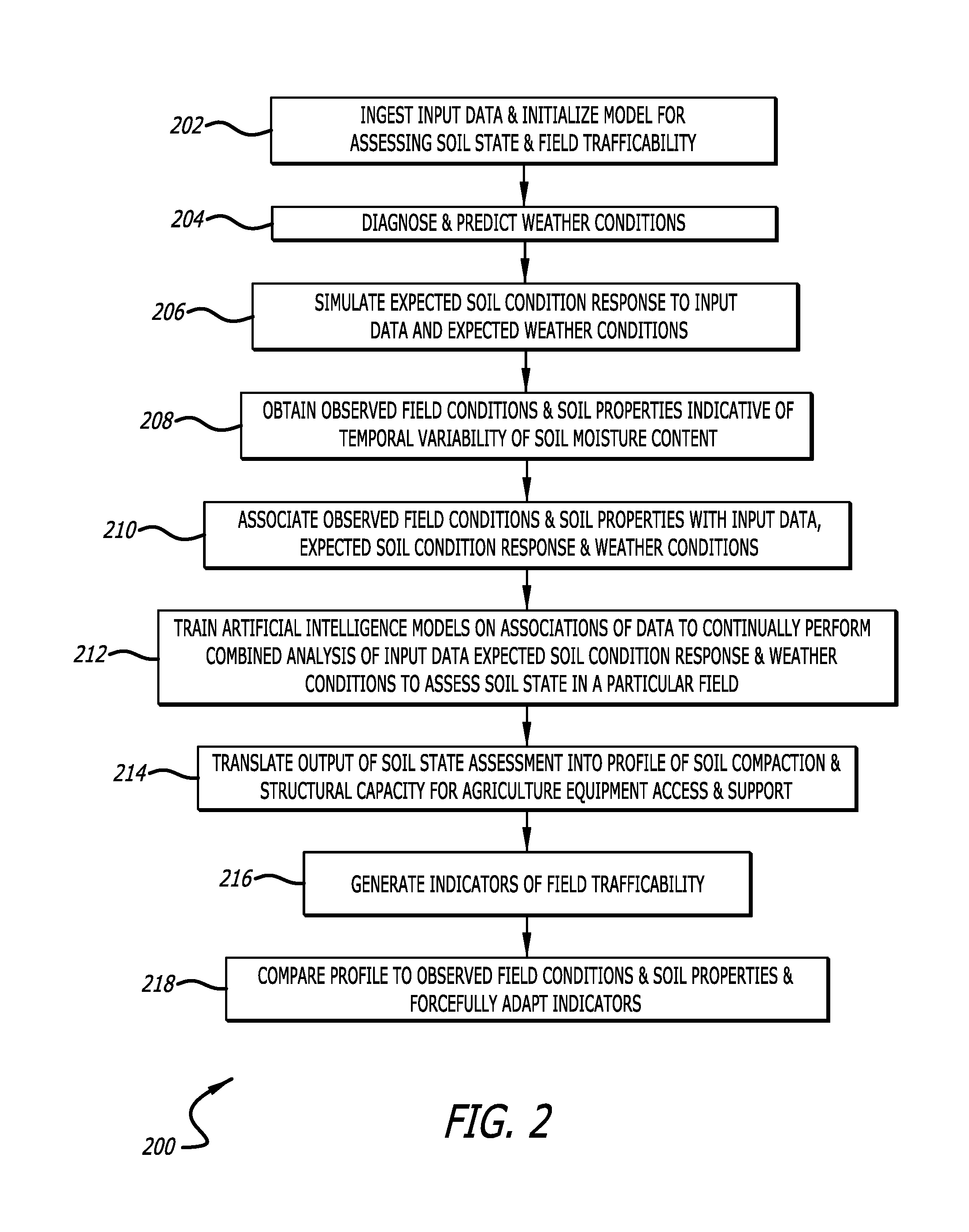Modeling of soil compaction and structural capacity for field trafficability by agricultural equipment from diagnosis and prediction of soil and weather conditions associated with user-provided feedback
a technology of soil compaction and model, applied in the field of precision agriculture, can solve the problems of affecting affecting the productivity of soils, damaging soil structures, etc., and achieves the effect of improving the accuracy of land surface model outputs and accurate model diagnoses and forecasts of soil conditions
- Summary
- Abstract
- Description
- Claims
- Application Information
AI Technical Summary
Benefits of technology
Problems solved by technology
Method used
Image
Examples
Embodiment Construction
[0023]In the following description of the present invention, reference is made to the exemplary embodiments illustrating the principles of the present invention and how it is practiced. Other embodiments will be utilized to practice the present invention and structural and functional changes will be made thereto without departing from the scope of the present invention.
[0024]The present invention is a field accessibility modeling framework 100 for performing assessments of a soil state, and diagnosing and predicting a suitability of soil conditions to various agricultural operations from such assessments. This field accessibility modeling framework 100 presents multiple approaches for simulating relationships between predictive data, various crop and observable outcomes, and is embodied in one or more systems and methods that at least in part include a model that analyzes weather information, together with soil, crop and field characteristics, to assess whether a field is accessible...
PUM
 Login to View More
Login to View More Abstract
Description
Claims
Application Information
 Login to View More
Login to View More - R&D
- Intellectual Property
- Life Sciences
- Materials
- Tech Scout
- Unparalleled Data Quality
- Higher Quality Content
- 60% Fewer Hallucinations
Browse by: Latest US Patents, China's latest patents, Technical Efficacy Thesaurus, Application Domain, Technology Topic, Popular Technical Reports.
© 2025 PatSnap. All rights reserved.Legal|Privacy policy|Modern Slavery Act Transparency Statement|Sitemap|About US| Contact US: help@patsnap.com



